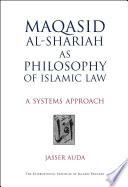
Deradicalizing and Disengaging the Children of the Islamic State - ISIS Radicalization Belgian Case Study, Physical and Psychological Consequences of Child Association With Terrorists Groups
Thousands of ISIS fighters and supporters, over 4,000 children being among them, were displaced after the Islamic State's proclaimed caliphate collapsed in 2019. While some countries have been either ambivalent or completely against repatriating ISIS children, other countries have planned to accept them back. This leads to several questions: are current deradicalization and disengagement programs applicable to the children of ISIS? Would these programs help to reintegrate children back into society? Are different approaches needed? To better answer these questions, the research in this thesis extracts key themes present in current deradicalization and disengagement programs and compares those themes with the factors motivating children to join terrorist organizations. Through qualitative analysis, this thesis finds that current programs are largely prison-based and place heavy emphasis on addressing radical ideologies and providing social aid. Unfortunately, these programs are not suited for child reintegration and are unprepared to handle the unique cognitive and social aspects of adolescents. Therefore, this thesis recommends that current deradicalization and disengagement programs replace strategies that address ideology and provide untailored social aid with programs that address positive peer contacts, foster constructive social networking, and provide psychological counseling and guidance, so that the children of ISIS can be successfully reintegrated back into society.This compilation includes a reproduction of the 2019 Worldwide Threat Assessment of the U.S. Intelligence Community.I. Introduction * A. Importance * B. Clarifying Terminology * C. Findings * D. Thesis Overview * II. Factors That Propel Children Into Radicalization * A. Structural, Social, and Individual Factors * 1. Structural * 2. Social * 3. Individual * B. Radicalizing Children Into ISIS: A Belgian Case Study * C. The Consequences of Child Association With Terrorists Groups * 1. Physical * 2. Psychological * D. Conclusion * III. An Analysis on Deradicalization and Disengagement Programs and Their Effectiveness * A. Key Elements of Deradicalization and Disengagement Programs * 1. Ideology * 2. Social Aid * B. Measuring the Effectiveness of Deradicalization and Disengagement Programs and Strategies * C. Conclusion * IV. Deradicalization and Disengagement Programs Applied to Children * A. Can Current Programs Help Children? * 1. Aspects of Deradicalization and Disengagement Programs Applicable to Children. * 2. Aspects of Deradicalization and Disengagement Programs Inapplicable to Children * 3. How to Improve Deradicalization and Disengagement Programs for Children * B. Additional Areas Of Concern * C. Conclusion The Islamic State of Iraq and Syria (ISIS), also known as the Islamic State (IS) or by the Arabic acronym Daesh, grabbed the attention of the world through its rapid expansion and gruesome, violent extremism. This group was able to seize and control territory inside Syria and Iraq the size of Britain that contained a population of eight million people. Thousands of Muslims from around the world flocked to ISIS when it claimed to have established the caliphate under its leader and self-proclaimed caliph Abu Bakr al-Baghdadi. During the height of its three-year rule starting in 2014, large swaths of followers including thousands of foreign citizens as well as children and adolescents traveled to Iraq and Syria in order to join ISIS and its attempt to rebuild the caliphate. Now that ISIS has experienced a loss of territory at the hands of an aerial campaign headed by the United States, foreign fighters are attempting to return to their host countries.
- ISBN 13 : 9781687374585
- ISBN 10 : 1687374589
- Judul : Deradicalizing and Disengaging the Children of the Islamic State - ISIS Radicalization Belgian Case Study, Physical and Psychological Consequences of Child Association With Terrorists Groups
- Pengarang : U S Military, Department of Defense (Dod), Britni Barricman, Department of Defense (Dod), Britni Barricman,
- Bahasa : en
- Tahun : 2019
- Halaman : 96
- Google Book : http://books.google.com/books?id=cR3NyAEACAAJ&dq=intitle:ISLAMIC+CONSELING&hl=&source=gbs_api
-
Ketersediaan :
Therefore, this thesis recommends that current deradicalization and disengagement programs replace strategies that address ideology and provide untailored social aid with programs that address positive peer contacts, foster constructive ...









